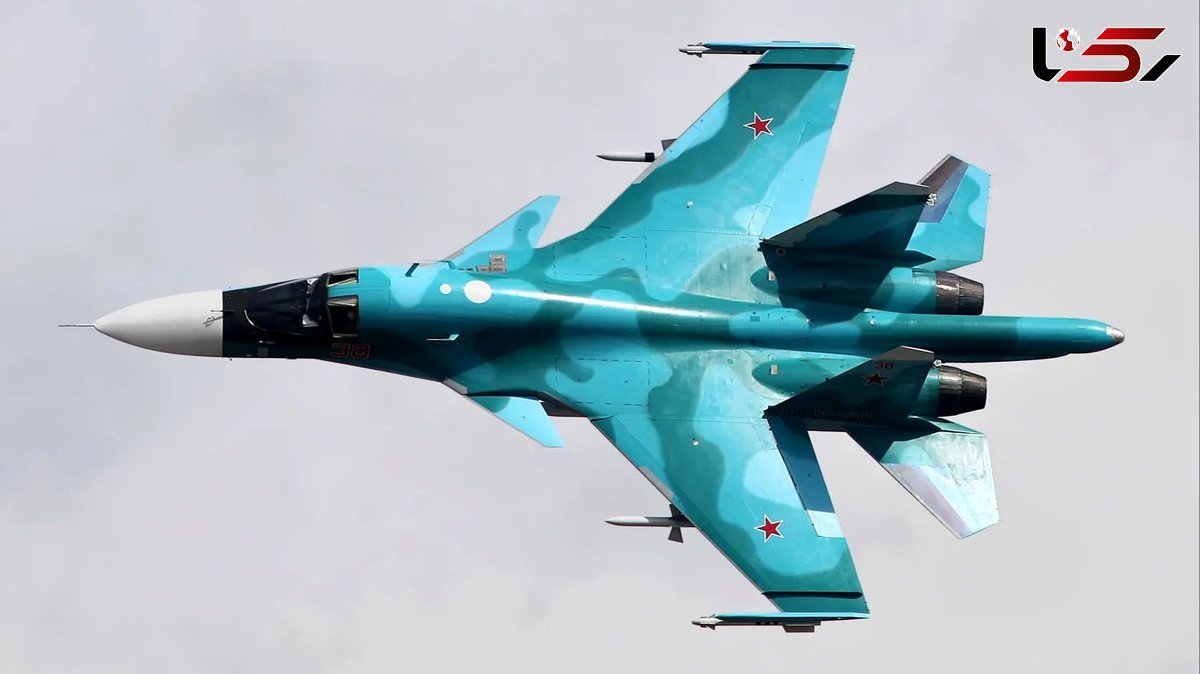Su-35 or Su-34: Which Fighter Jet Better Serves Iran’s Defense Needs?
Rokna Political Desk: As regional tensions continue to rise, Iran faces an urgent need to modernize its air force with advanced fighters capable of both defensive and offensive operations. Among Russia’s top combat aircraft, the Su-34 and Su-35 stand out as potential game changers for Iran’s air power — but which one would prove more practical?

The Su-34: A Heavy Strike Platform
The Su-34, known by its NATO designation “Fullback,” is one of Russia’s most advanced strike aircraft, developed from the Su-27 platform and designed primarily for long-range ground and maritime attack missions.
According to Rokna, the Su-34 is powered by two AL-31F-M1 turbofan engines, enabling a top speed of Mach 1.8 (around 2,200 km/h) and a combat range of approximately 4,000 km, which can be extended to 7,000 km with aerial refueling. The aircraft’s empty weight is about 22,500 kg, with a maximum takeoff weight of 45,100 kg. Measuring 23.3 meters in length, 14.7 meters in wingspan, and 6.1 meters in height, it is a robust and sizable platform.
The Su-34 can carry up to 12,000 kg of diverse weaponry, including Kh-59MK anti-ship cruise missiles (285 km range), KAB-500L laser-guided bombs, Kh-31P anti-radiation missiles, and R-73 short-range air-to-air missiles for self-defense. It is also equipped with a 30mm GSh-301 cannon capable of firing 1,500 rounds per minute.
Its Leninets B-004 radar can detect air and ground targets at ranges between 200 and 250 km, while the Platan electro-optical targeting system allows for precision strikes. The twin-seat cockpit design lets the pilot and weapons officer divide navigation and targeting duties — a key advantage for complex or long-duration missions. In addition, the Khibiny electronic warfare suite enhances survivability by jamming enemy radar and disrupting guided missile systems.
The Su-35: A True Multirole Air Superiority Fighter
By contrast, the Su-35 — NATO reporting name “Flanker-E” — is a single-seat, multirole fighter optimized for air superiority and precision strike missions. It features AL-41F1S engines with thrust-vectoring nozzles, granting it exceptional agility and a top speed of Mach 2.25 (around 2,700 km/h). The Su-35 has a combat radius of 3,600 km, extendable through aerial refueling, and an empty weight of 16,500 kg with a maximum takeoff weight of 34,500 kg — making it lighter and more maneuverable than the Su-34.
Equipped with the powerful Irbis-E radar, the Su-35 can detect aerial targets at ranges up to 400 km. It can carry up to 8,000 kg of ordnance, including long-range R-77 air-to-air missiles, Kh-35 anti-ship missiles, and precision-guided bombs. Its high maneuverability, aided by thrust-vectoring engines, makes it one of the most capable dogfighters in the world.
Iran’s Air Force Requirements
Iran’s air force is currently seeking to replace its aging fleet of F-4s, F-5s, F-14s, and MiG-29s. Given the country’s geopolitical environment and the aerial and missile threats it faces from both regional neighbors and extra-regional powers, the need for an advanced air superiority fighter is pressing.
The Su-35, with its long-range radar, superior maneuverability, and capability for beyond-visual-range combat, appears better suited to replace legacy aircraft like the F-14 Tomcat — still the backbone of Iran’s air defense. Reports indicate that Iran has signed a contract for 48 Su-35s, with deliveries reportedly underway, underscoring Tehran’s priority to strengthen its defensive capabilities.
Final Comparison and Outlook
While the Su-34 excels in long-range strike missions against ground and naval targets — such as enemy infrastructure or warships — Iran’s current strategic needs are more closely aligned with air defense and air superiority missions. The Su-34’s heavy payload and advanced strike capabilities could serve as a complement to Iran’s fleet in the future, but its higher maintenance costs and logistical complexity pose challenges under ongoing sanctions and economic constraints.
The Su-35, on the other hand, offers a more balanced and cost-effective option with multirole flexibility, lower operating expenses, and stronger compatibility with Iran’s defensive priorities. Considering recent procurement reports and strategic trends, the Su-35 stands out as the more practical and realistic choice for Iran’s air force modernization.
Send Comments